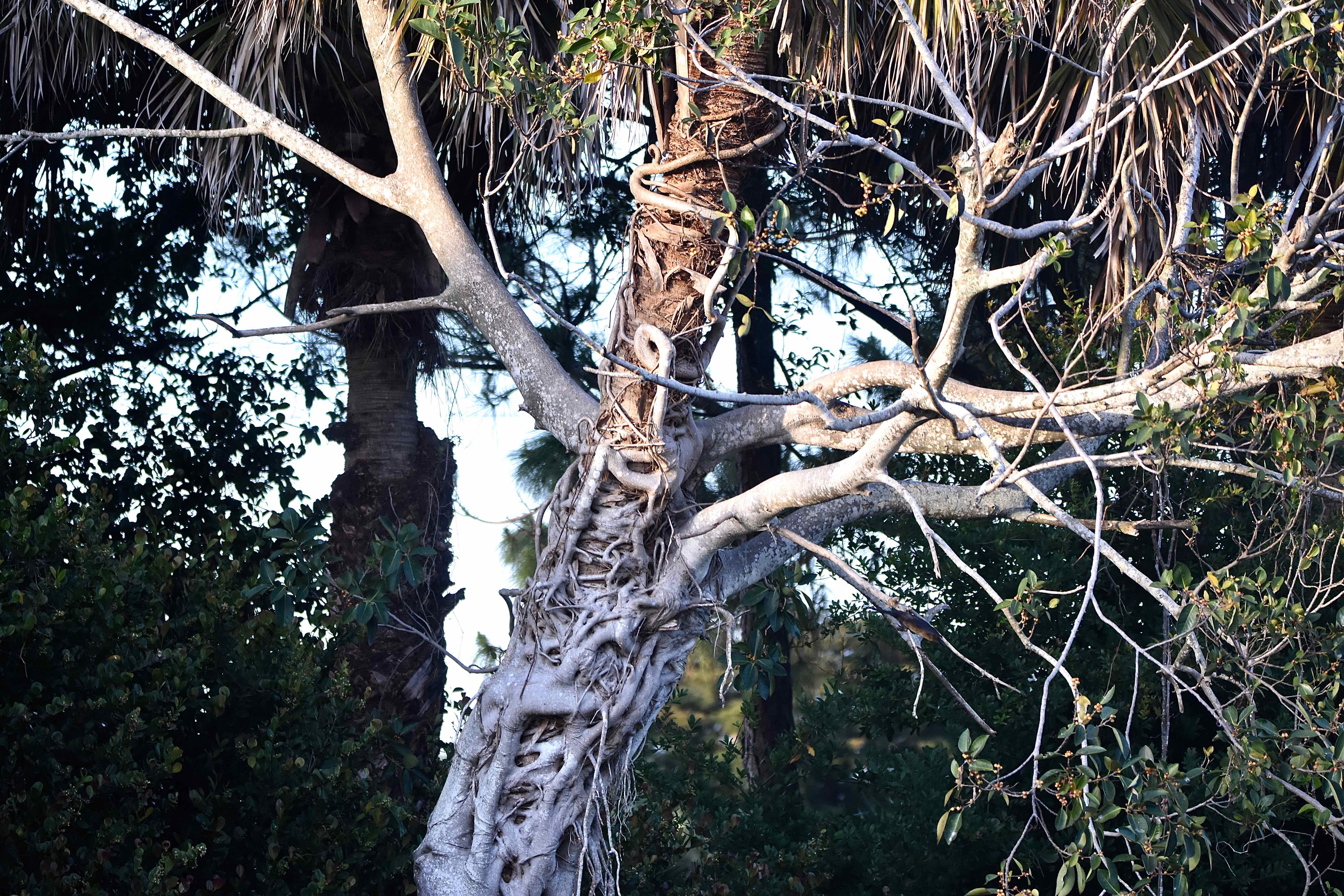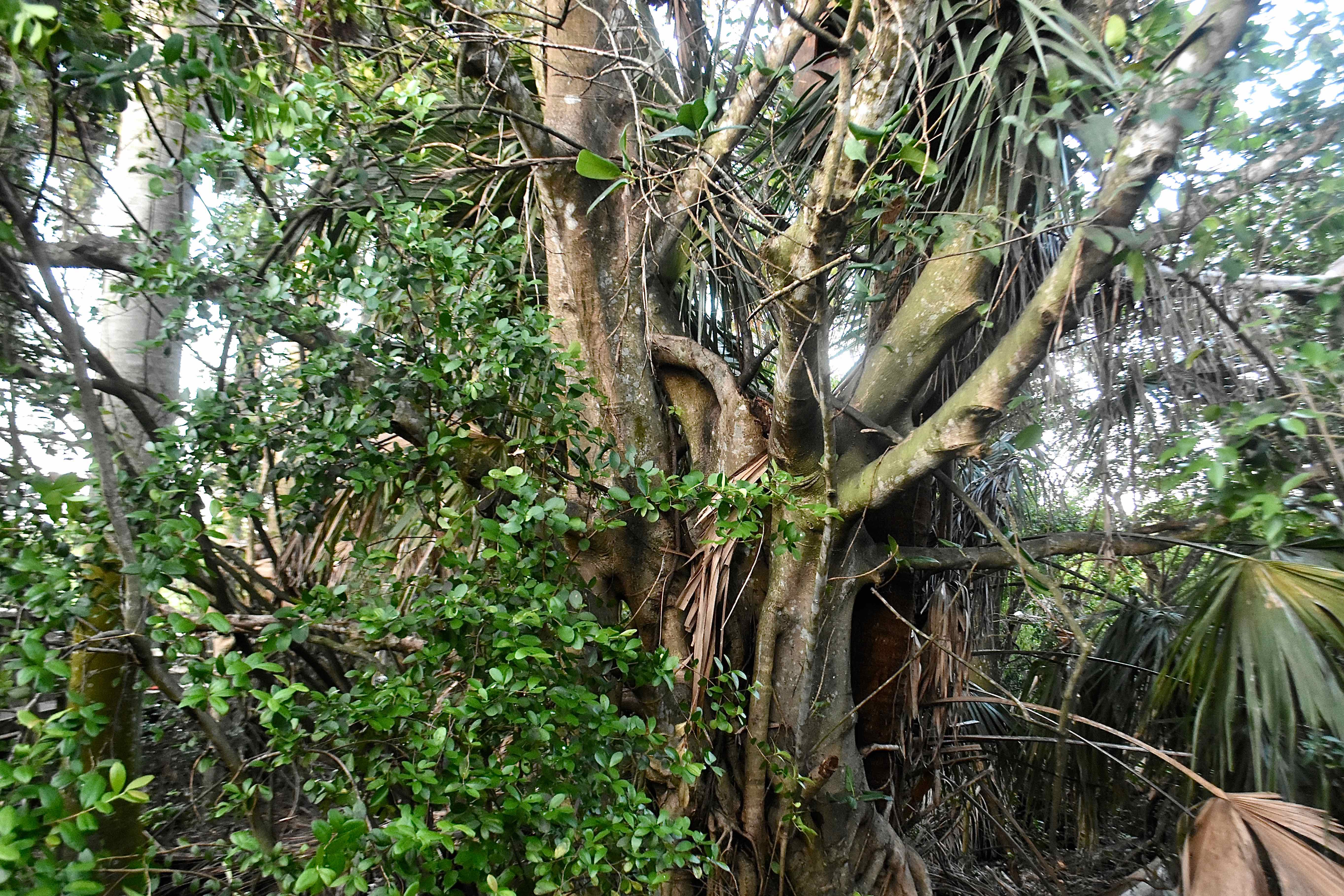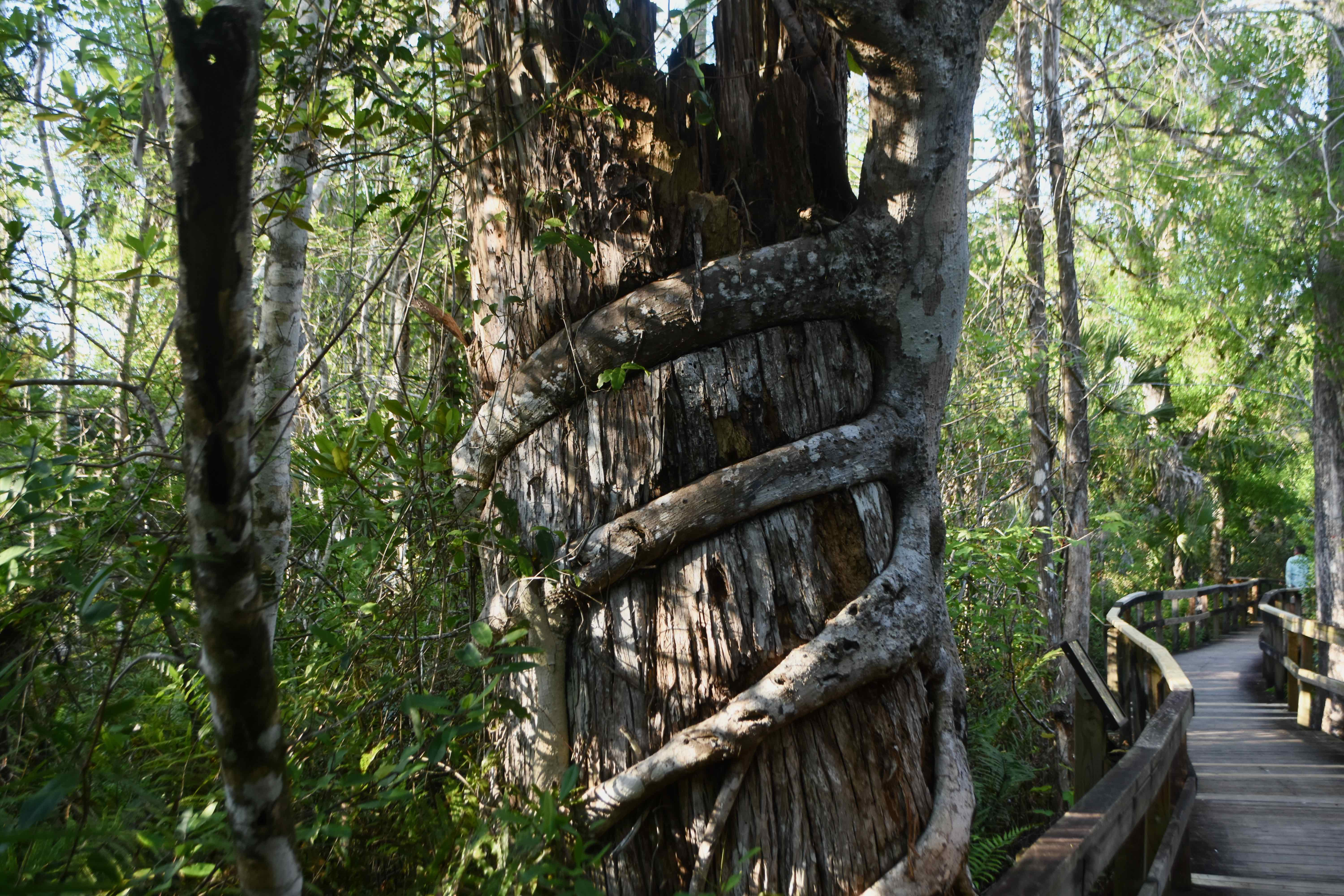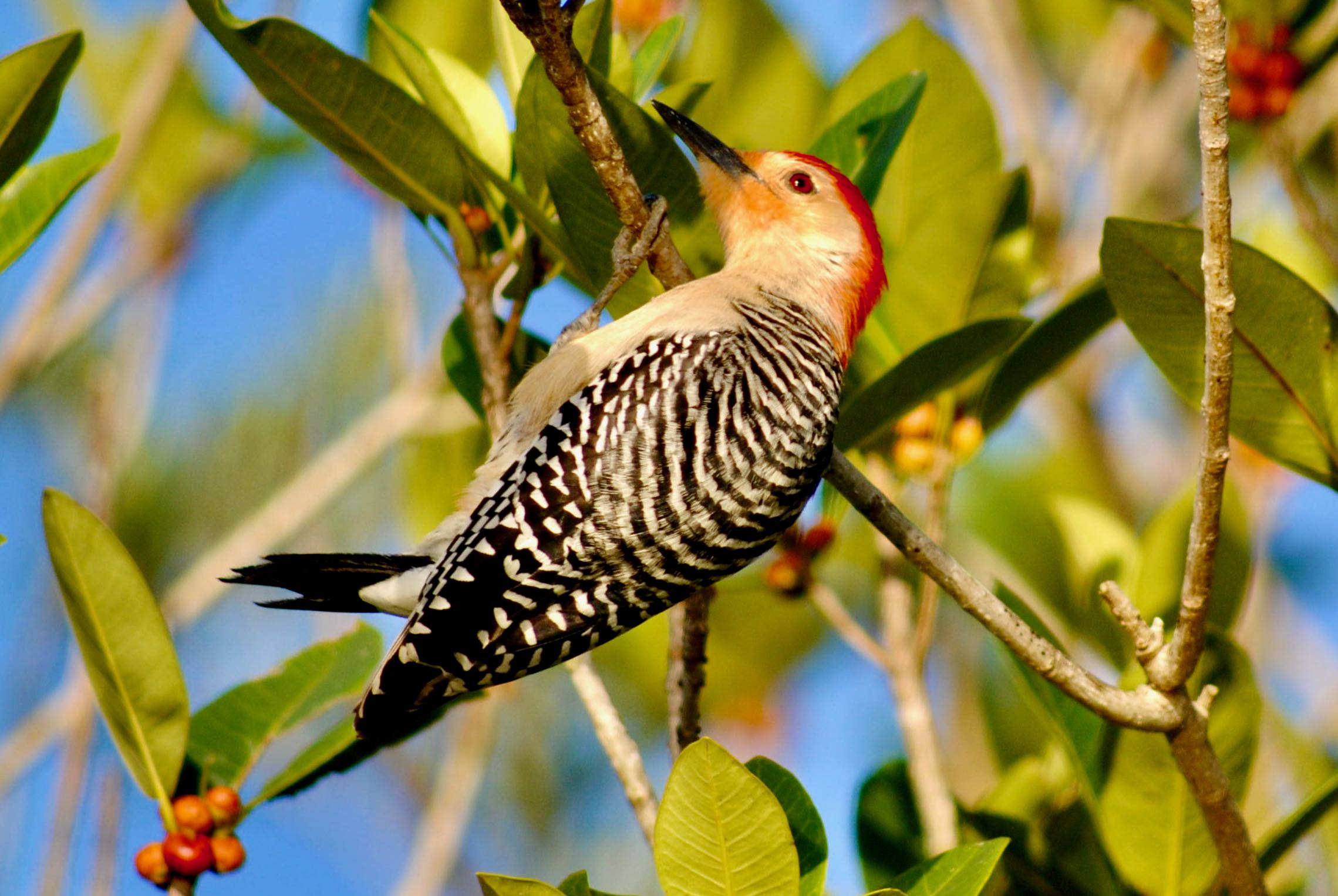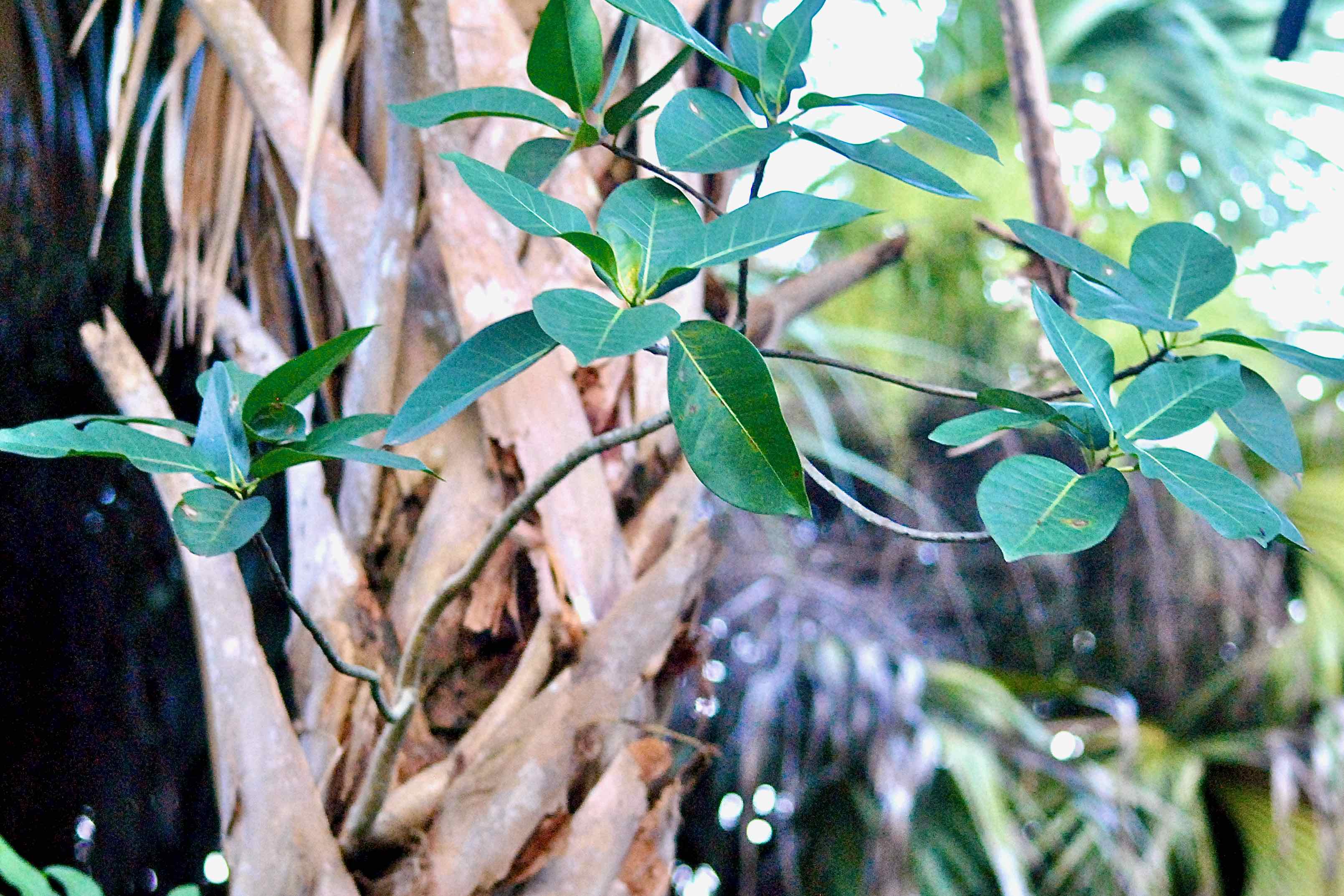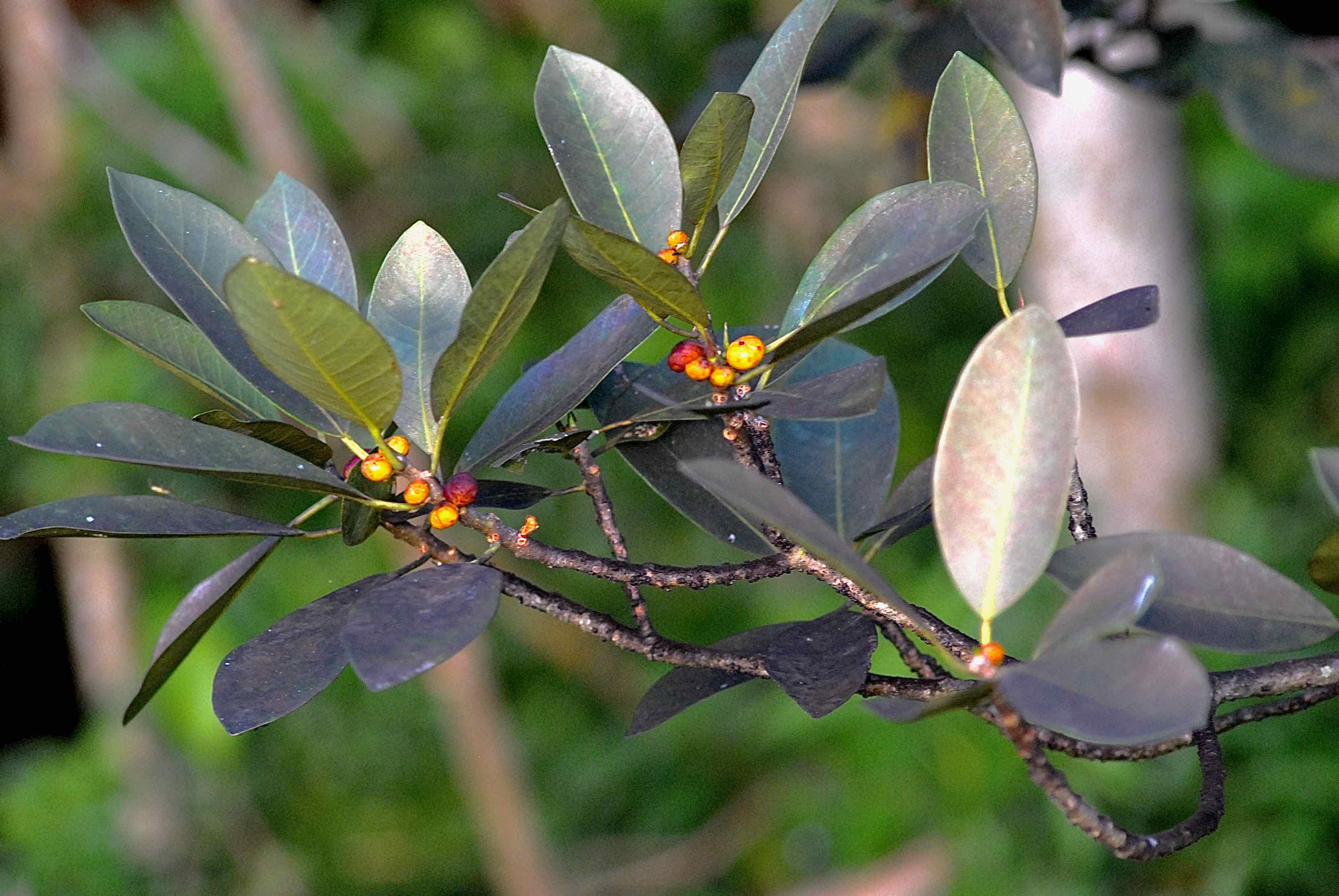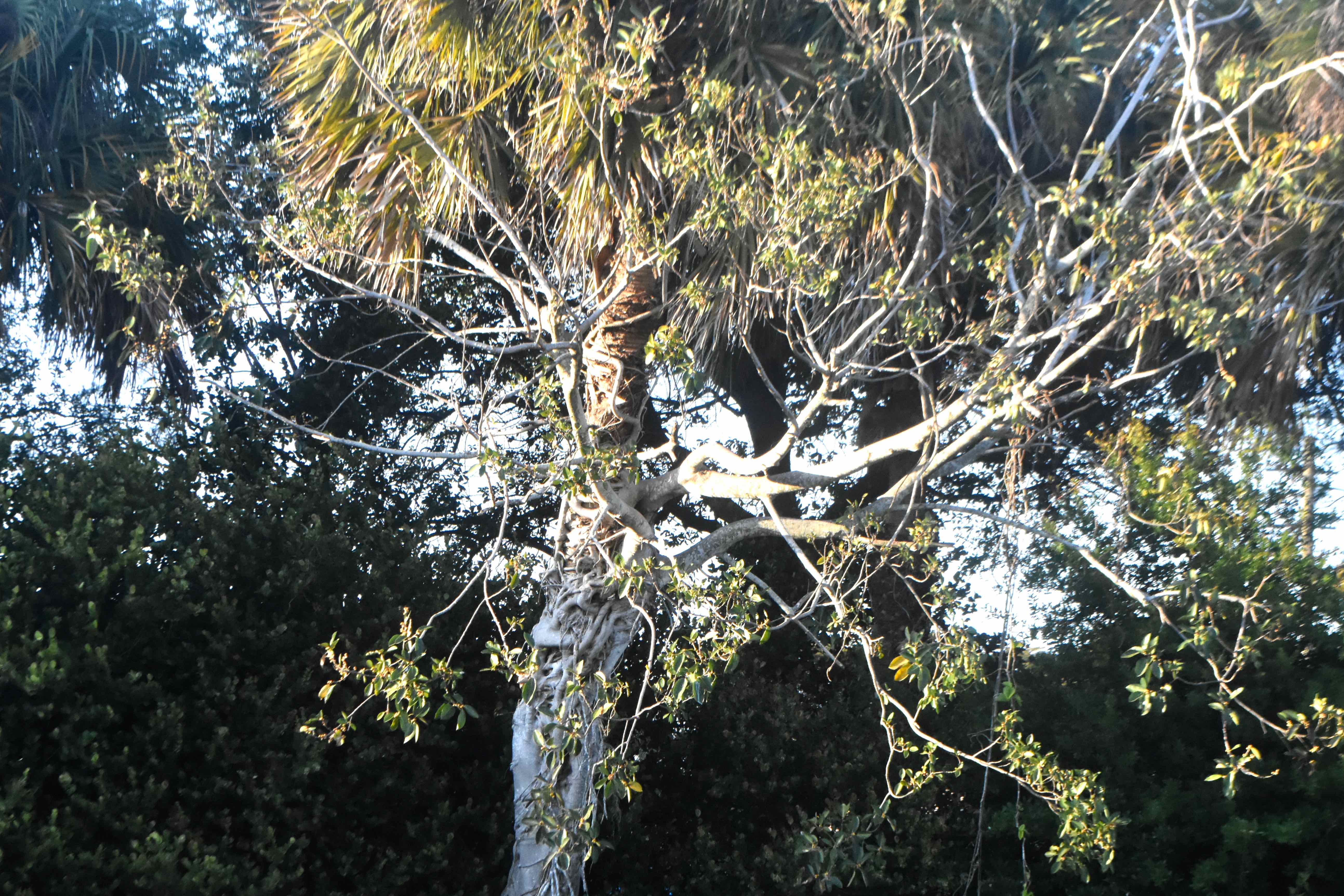
Strangler fig, photographed at Green Cay Nature Center, Boynton Beach, Palm Beach County, in April 2021.
The strangler fig is seriously strange. First, it is a parasite that will kill its host, if it gets the chance. But even more bizarre is the way it reproduces, and its coevolutionary relationship with a wasp so obscure it doesn't even have a common name.
Despite the oddities, the strangler fig is also one of the most important trees in the Florida landscape, helping both to feed and shelter numerous species of birds, reptiles amphibians and mammals. It all adds up to make one of the most fascinating trees found in Florida, or anywhere else for that matter.
The strangler is known to the world of science as Ficus aurea, golden fig, and Florida is the only state where it's found. It is a fast grower, reaching as tall as 60 feet and spreading as much as 70 feet.
It usually starts out life as an epiphyte — an air plant, relying on a host, usually a cabbage palm for structure only. A seed drops in a boot of a cabbage palm, germinates and the seedling starts sending down aerial roots to the ground. When they reach the ground, they'll start providing structure for the young tree, and it will start competing with the host for water and nutrients.
As the tree grows, it will send out more roots, which wrap around the host in a "strangling" manner. Eventually, the strangler will overgrow its host, robbing it of sunlight.
Alas, the host dies, but the strangler lives on, feeding on the nutrients provided by the now-decaying tree. Other animals, large and small, take advantage of the the strangler's foul deed; birds, bats, bugs, raccoons, reptiles and amphibians take up home in the hollow remains.
The strangler itself provides fruit for birds, like the red-bellied woodpecker below, feasting on figs at Green Cay Nature Center in Boynton Beach. The birds then poop the seeds and spread the next generation of cold-blooded killers. And there is that bizarre little wasp that the strangler fig relies on to pollinate its flowers. The first thing to know is that all figs, regardless of species, rely on a wasp to pollinate their flowers, and that each fig species has its own wasp species. In the case of the strangler fig, its wasp is called Pegoscapus mexicanus. It has no common name.
The second thing to know is that what we see as the fruit of the fig tree really is more like a fleshy flower stalk, with the flowers inside. Yes, inside. The strangler fig attracts wasps by sending out a scent that entices only P. mexicanus females to come and pollinate its flowers. To do so, the wasp must make its way through a hole so tiny that she'll lose her wings and perhaps antenae in the process. No matter, the fig is her domain for the rest of her short life.
So now you've got this tiny bug stuck inside the fig. She does two things — runs around and pollinates the flowers (with pollen collected from the fig where she was born) and she lays her eggs inside what are to become strangler fig seeds. Oh, actually she does a third: she dies. Her offspring hatch, eat the seeds and emerge as fully formed adult wasps. Males, which are born without wings, have only one thing on their minds: find a nice female to mate with. And then they die, having never seen the light of day or the great big, beautiful world beyond the inside of the fig. Sigh . . .
The females emerge from the fig fertilized and ready to find a fig of their own where they can repeat the process. Fortunately for the strangler, not all seeds bear wasp eggs that will ravage their insides. These seeds become the next generation of strangler figs.
Without the strangler fig, P. mexicanus doesn't exist. Without P. Mexicanus, the strangler fig doesn't exist. Evolutionary codependency at its finest.
Anyway, the strangler fig's range extends as far north as Volusia County, south through the Caribbean, Mexico, and Central America to Panama. It's found in hammocks and swamps; sabal palms and cypress trees typically serve as hosts. Strangler figs don't always win, but they usually don't lose, either. In Corkscrew Swamp Sanctuary and Fakahatchee Strand, strangler figs have attached themselves to some massive cypress trees, which dwarf the parasites.
One more thing: its epiphyte beginnings are the perfect adaptation for its habitat. The floor of a hammock or a swampy cypress forest is a difficult place for a seedling to begin life because of the limited amount of light that penetrates through the canopy. By starting life higher up the ladder, so to speak, the strangler improves its chances of reaching sunlight and maturity.
The strangler is one of two fig species native to Florida. It is a member of Moraceae, the mulberry family.
Click on photo for larger image
Links for Strangler Fig

